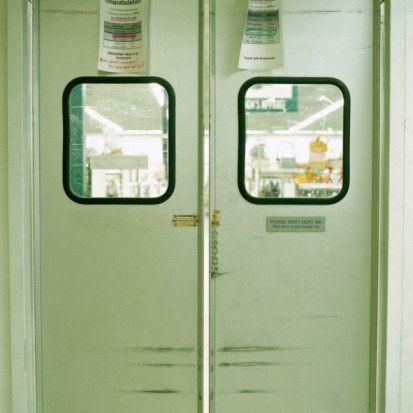
The closing of St. Vincent's Hospital in New York City recently reminded me about some of the hazards of going into -- and coming out of -- the hospital. As an internist and geriatrician working (as well as a lifelong New Yorker), I got a bird's eye view as Saint Vincent's did god's work in caring for generations of some of the most vulnerable New Yorkers. I also got an all-too-close view of the fallout.
Shortly after Saint Vincent's closed, I cared for a patient who had had a surgical procedure there weeks earlier. She landed in another emergency room because there was no place else to go. She was then readmitted with a complication. But what we had here was not a surgical complication. No, what we had here -- to borrow a line from a favorite boomer movie -- was a colossal failure to communicate. Symptoms that could have been easily recognized and tended to a week earlier weren't, and a needless hospitalization resulted.
Now at this point you may be thinking that I'm being unfair. The poor lady had the bad luck of having her surgical procedure a week before the venerable New York institution that served her closed its doors after 150 years of operation, and there was simply no one to call when she got into difficulty. Who could have foreseen that? That could never happen if I were hospitalized at my local clean-as-a-whistle, financially solvent St. Elsewhere, right?
Sadly, the real eye-opening lesson is this: your local hospital doesn't have to be closing to put you at risk. Even if your hospital technically remains open, it might as well be closed after you go home.
One of the hottest new areas of aging research that could have a profound impact on your well being: care transitions. And here's the bottom line: The most vulnerable time in American health care is not necessarily during your hospitalization; it's actually when you move from the hospital to the next convalescence waypoint -- home, a rehab facility or just back to your doctor's office. Consider a few of the following sobering studies from the field of care transitions:
- In some parts of the country, more than 25 percent of patients discharged from the hospital are readmitted within 30 days, often because no one tells them what to do or expect when they leave the hospital.
- Nearly half of hospitalized patients -- of all ages -- experience at least one medical error upon hospital discharge involving a medication, follow-up appointment or test.
- In another study of "the receiving end" of patient discharges, primary care physicians were unaware of 62 percent of tests that were still pending on their patients at the time of discharge. Since primary care physicians no longer follow their patients into the hospital, this problem is a huge and growing issue, because the tests are ordered by "hospitalists" and may never reach the right doctor.
And we ain't just talking hospital discharge here: hospital admission is another ripe opportunity for problems. In one study, 54 percent of patients had a medication discrepancy upon their admission to the hospital with medicines they were taking at home. Many of these were potentially life threatening.
And who is at greatest risk of suffering the ill effects of care transition shenanigans? Older adults. As we age, we suffer disproportionately from care transitions problems. Why? Well for one thing, there's simply more to keep track of -- more medicines, more doctors and more medical problems.
Then there's our ever-growing sub-specialty culture: everybody seems to think that having one guy take care of your right thumb and another do the left is a great idea. But there's a whole person attached to those body parts. And yes, the increasing dearth of primary care doctors (who no longer follow you in the hospital and really know you, your medical problems and your family), is also a contributing factor.
And then there's the modern American Hospital, conceived of -- operationally and architecturally -- a hundred years ago, when the average patient was 25 and came to get their tonsils out, get a cast put on (and maybe stay overnight for it), or perhaps have a baby. Now these same hospitals are serving patients who are decades older on average, have between 5 and 10 chronic medical conditions, and a completely different cast of characters from the people who care for you when you're outside the walls of "the big house."
So if your anxiety level is appeased by knowing that your local community hospital is not likely to share the fate of venerable Saint Vincent's anytime soon, don't get too complacent. It might as well be closed, because in many American hospitals you're simply shooed from the windowsill after you've been nursed back to health (usually in 72 hours or less), and you're expected to "fly" on your own.
But there's also some good news. Many hospitals are developing innovative programs to improve post discharge continuity and communication. I'm fortunate enough to work in one, and I can tell you, it's worth the investment. All over the field, people are devising great strategies to teach patients and families how not to become a victim of care transitions, and in my next blog, I'll lay them out for you. In the mean time, remember one of our favorite aphorisms in geriatric medicine: The hospital is no place for sick people. And sick hospitals are definitely no place for sick people.
For more information on care transitions and other matter related to aging, please visit my web site: www.treatmenotmyage.com.